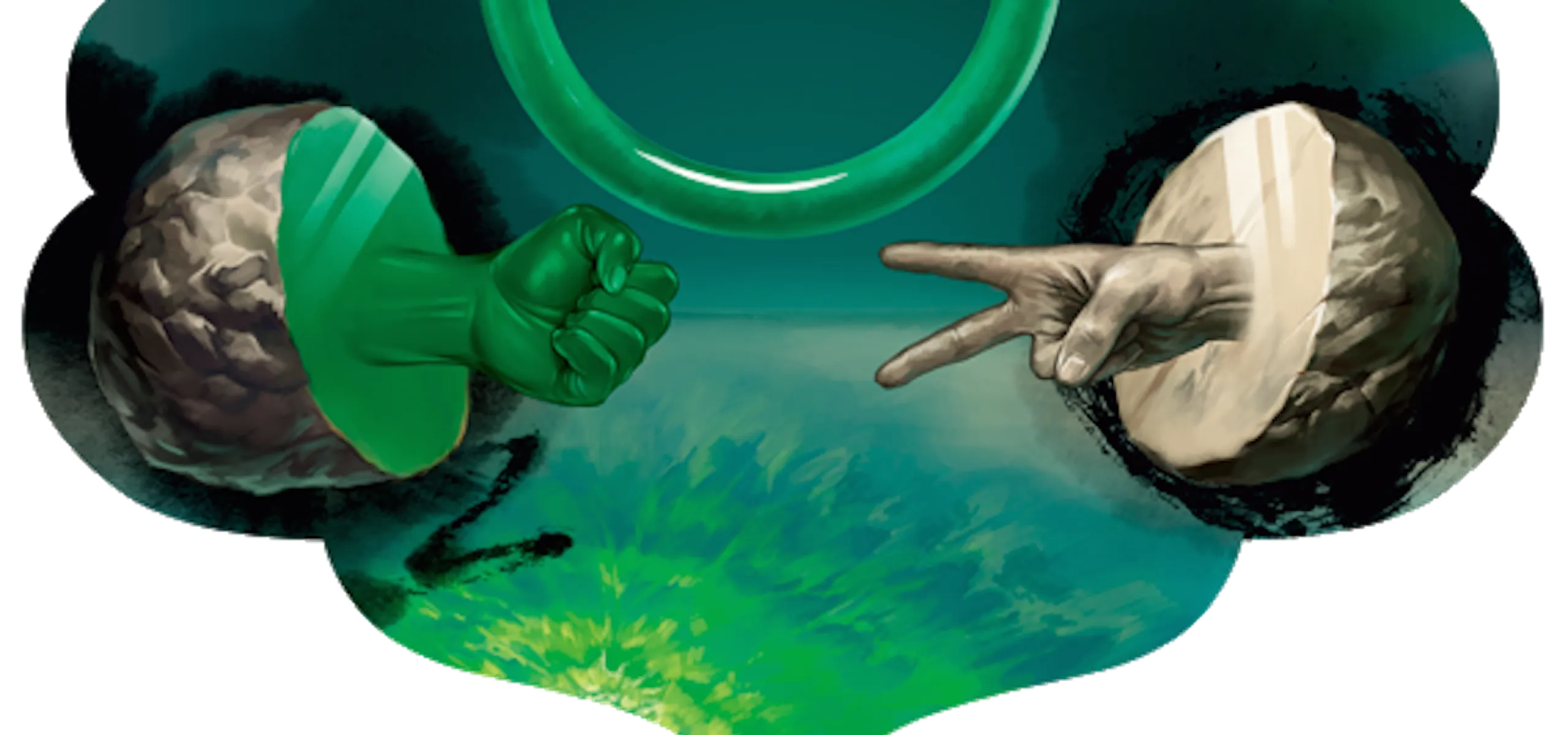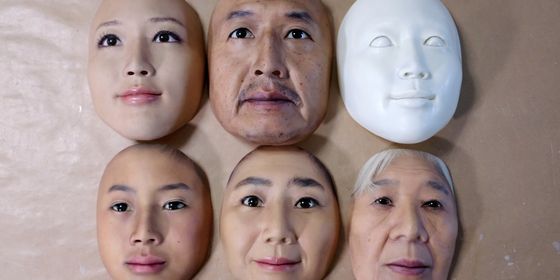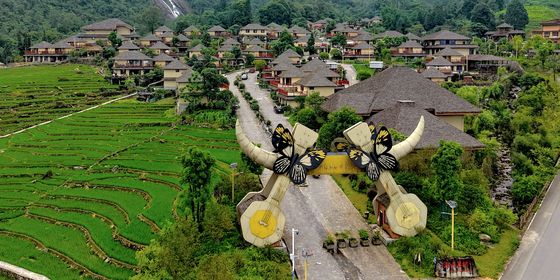Precious jade or worthless rock? Collectors in China are staking their savings on finding out
Some people get rich quick by winning the lottery, some get a lucky streak at a casino. But some instant millionaires have success etched in stone.
Ruili is a small city near the border of Myanmar—China’s biggest source of jade imports. This proximity to Myanmar’s infamous jade mines has meant the city of around 200,000 has become China’s largest jade distribution center. There, people hold flashlights up to every stone in the market, hoping to find a rock with precious jade inside.
Most, however, have a better chance of going broke after betting all their savings on a seemingly priceless rock which contains nothing of value.
The prices of the irregularly shaped raw stones in jewel stores and vendors’ carts range from several hundred to millions of yuan, but their real value can only be found after they are bought and cut open—a sort of Schrödinger’s stone.
Welcome to one of China’s oldest forms of gambling.
Raw jade is almost always covered by base material and looks no different from any normal rock, but people often fantasize about the glittering treasures hidden within; this fantasy forms the basis of the traditional business of dushi (赌石), or gambling on stones.
It’s a risky business. Neither the buyer nor the seller knows the quality of the stone. Even the most experienced connoisseur will know the old saying, “Even an immortal can’t judge an inch of jade (神仙难断寸玉).”
After buying a stone, the buyer will have to consider whether to cut it or not; once open, it is either priceless or worthless.
But, if it’s not opened, the mystery remains, and it can still be sold to another buyer, perhaps at an even higher price. A common trick is to make a small cut or scrape a bit off the surface. Assisted by a flashlight, buyers can check its color and transparency (important features for nice jade), and thus provide a “window” into the quality of the stone.
If the “window” is transparent enough and has a vivid color, buyers tend to believe there is quality jade inside and the price of this rock will at least double—even though the bare areas might reveal nothing at all about the stone’s content. Very often, experienced traders, uncertain of the quality, will sell the partly scraped stone to another buyer to transfer the risk.
For jade mine owners, selling the uncut stones to wholesalers is often the best way to make money.
Hundreds and thousands of tons of raw jade are mined every year, but only a small amount is valuable. “If I cut and scrape all my stones before selling them, most of them will be sold cheaply and my business will suffer. The cost is too high,” said a Chinese owner of a jade mine in Hpakant, in Myanmar’s Kachin State. “So I just sell them all to wholesalers and some real professional buyers.”
For many years, it’s been a common practice to trade raw jade stones, but nowadays, more amateurs, lured by potential fortunes, have flocked into the market to try their luck. Once they start on the road to this adventure, it’s hard to stop, especially with occasional stories emerging of someone finding a priceless stone among the slurry.
Tan Zhongxing, a jade trader in Chengdu, Sichuan province, became famous after he bought a raw stone for 60,000 RMB from Myanmar in 2013 and found jadeite inside with seven different colors. “Eventually a jade bracelet was carved out of it and the estimated price went up to 400 million yuan,” he said.
Many people came to Tan to buy the bracelet but he refused them all. Instead he stored it in a safe and it’s jointly-owned by the National Museum. “I don’t want to put a price tag on it, a treasure should be appreciated from both an artistic and cultural perspective,” he said.
Tan was a book publisher for decades and has only been in the jade business for five years, but thanks to the seven-colored bracelet, he is famous among jade traders and the revenue of his shop in Chengdu keeps increasing despite the recent anti-corruption campaign, which has put a damper on luxury products like jade.
Chinese have always put a premium on jade, an obsession that dates back to the Spring and Autumn period (770 BCE – 256 BCE). Confucius once said that jade has the virtues a gentleman should have; its gloss, fine texture, purity, and rigidity signify benevolence, knowledge, righteousness, and loyalty.
The first master of stone gambling was Bian He (卞和), a man said to have lived in the State of Chu. Bian found a jade stone, recognized the value inside, and offered it to his king. The royal jeweler examined it and concluded it was just a stone. The king deemed Bian a liar and cut off his left foot. Later, the king’s son ascended the throne and Bian tried his luck again. The new king cut off his right foot. The third king, who saw the man crying for days and nights in front of the stone, finally had his jeweler cut it open to find a large, pure streak of jade, proving Bian a righteous and honest man (with no feet).
Jade experts today still admire Bian’s certainty. To become a true expert, one must study—sometimes with a teacher, but mostly through trial and error.
Huang Hengzhong, 22, another jade dealer, has been learning how to distinguish precious jade from cheap stones since he was 17. After graduating from high school, instead of going to college, he moved to Ruili with his elder brother and mentor.
Huang learned that type, color, and transparency are the three main features in evaluating jade. “You should check the transparency of the jade and texture inside it; the more transparent, the better. Be careful, or you may get fake jade made of glass or crystal. Then, you look at the color. Low quality jade is colorless and full of irregular textures.”
He also learned, from more experienced dealers, about the characteristics of different jade mines and can make a general judgment on where a piece of raw stone has come from. “Some sites, especially the older ones, are known to have better jade with compact texture...I also read geographical and chemical books on how jadeite was formed,” Huang said.
To gain hands-on experience, he even went to Myanmar, where 90 percent of the raw jade traded in China comes from. Most of the mines are located in conflict-torn Hpakant, Kachin State. Yet huge demand from China keeps the jade mines operating despite warfare and rampant drug abuse among mine workers. “But I failed to approach these mine sites, which were controlled by military forces,” Huang said.
Yet Huang said all the knowledge he accumulated did not make him a gambler, and he has never cut a stone himself. “I just sell raw stones imported from Myanmar. Cutting is gambling. I don’t gamble.”
He witnessed enough drama in Ruili: taxi drivers losing their jobs, college students quitting school, real estate developers getting divorced and putting up all their property to bet on a rock—only to lose. Tales of suicide and bankruptcy are nothing new in this circle.
“Recently I saw a man cut a stone in half and the two ends appeared to be dark green, we were surprised. It was so rare and beautiful that several witnesses, jade dealers, soon offered to buy the two pieces for two million yuan.”
“The man refused. He continued to cut it. But when the two parts were halved, it turned out that beneath the surface, the streak between the two parts was just white, unclear jade. People sighed and comforted the man, then left,” Huang said. “With only a slice of green jade in such a large stone, the price dropped from two million to only several thousand yuan. That’s why we say ‘every cut is soul-stirring ’.”
Jade prices are too flexible to formulate strict standards. Huang said his knowledge and experience to “see through” raw stones helped him decide on “rather reasonable prices” for his products. “I cannot sell precious ones cheaply or sell those of low quality at a sky-high price. It would ruin future business.”
Dealers often quote another idiom of old: “There is a price for gold, but no price for jade (黄金有价,玉无价)”. Buyers’ expectations, and even conflicts in Myanmar, all affect the price.
The minimum price of a crystal-like jade pendant weighing 50 grams is about 80,000 yuan, but if it’s green, or dark green, the price doubles. If it has two colors, say green and yellow, the price could triple. If it’s neatly carved by a famous craftsman, the price shoots even higher. And, since every piece of jade varies, there is no sure-fire way to calculate price.
The price of uncut stone is even harder to determine. Sellers know buyers in a “bullish mood” will pay more.
A piece of jade worth around 30,000 yuan can be sold at 31,000 RMB if the seller deals with ordinary customers, but it could be sold at 50,000 RMB if the seller’s customers are officials or successful businessmen.
The chaotic pricing system has further contributed to speculators’ obsession.
“Most experienced buyers won’t dare to gamble on stones that haven’t been cut open at all. It’s the laymen who are bold enough to gamble, but nine out of ten become losers,” said Lei Shuming, 65, a jade collector with over 150 pieces at his home in Guangzhou, Guangdong province.
“The stones with the best potential are bought by professional buyers at the mining site, and it’s hard to find good stones on a gamble in an ordinary market,” Lei says. But some people just cannot stop. “The more you put in the bet, the more you believe you’re about to encounter a rock that may change your life.”












